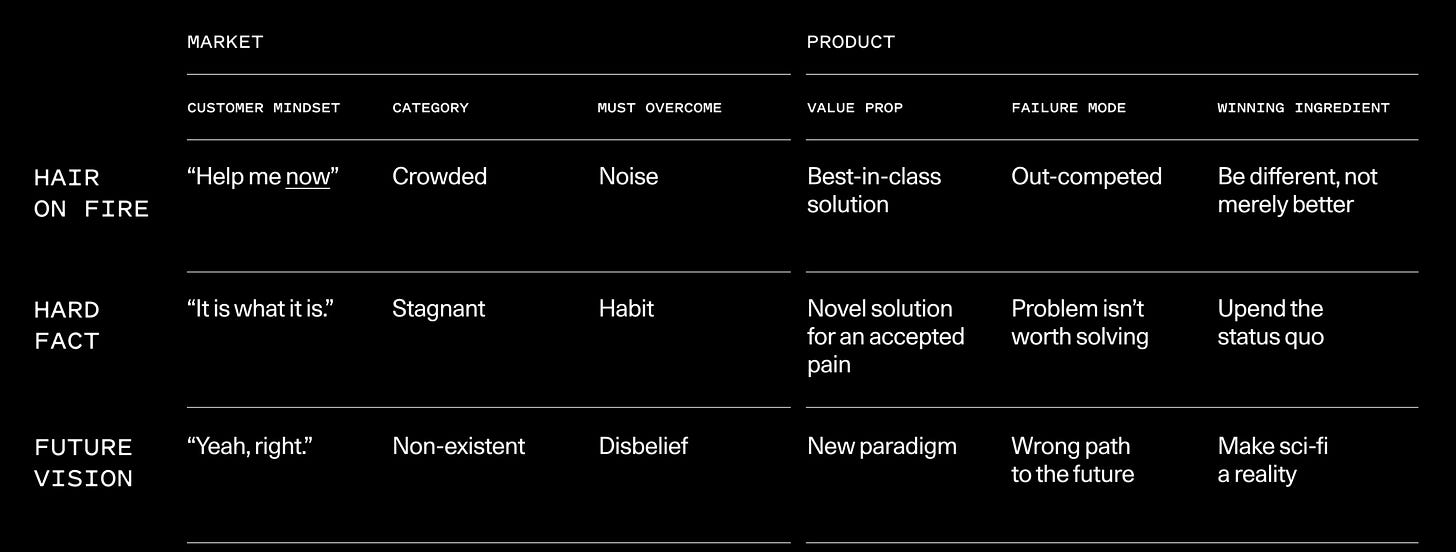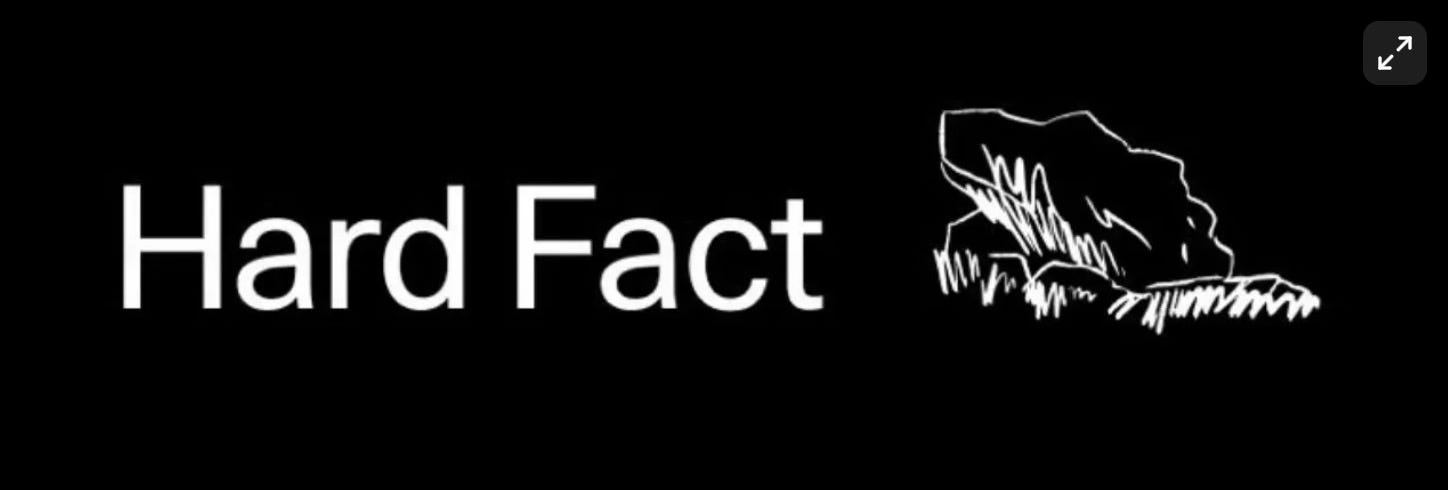🪴 Sequoia's Arc product-market fit framework
how to win the game of startups..
The main goal for all of you, founders, is to reach a PMF before you die. By this you gain a sizeable market share and can start playing the major league. But, how do you get there?
A team at Sequoia put together this framework for early stage founders that outlines 3 routes to reaching your desired PMF:
Hair on fire → You are solving an obvious and urgent problem for your customers. Market is saturated and competitive, therefore to succeed you need to create a best-in-class solution (Zoom).
Hard fact → You are solving a pain point the customer took for granted and is not trying to actively resolve. You need an approach that’s novel enough for a problem that matters enough, to be worth making a change (Notion).
Future vision → Your solution looks like it’s here 20 years early. There’s no problem, no obvious customer base, your vision seems like a Christopher Nolan movie. The obstacle here is disbelief. Customers must find your product/solution irresistible. Either the concept is familiar but sounds impossible (like abundant cheap energy from nuclear fusion) or no one ever imagined it existing (iPhone).
Would you like an extra post every week? Become a premium subscriber and receive all the perks!
How to operate in each path:
Once you understand these archetypes, you should be able to self-identify which trajectory is your company on.
Oftentimes you find out later on you might have not been in the archetype you originally thought so. The more user studies and interviews you conduct, the closer you get to your customer. The important thing here is that your archetype is defined how your customer relates to this problem and how they feel about your solution, not how you view it.
The Hair on Fire requires both a great product and a great go-to-market strategy. You need this combination of solution, selling and speed in order to overcome competition.
You are in a competitive fight, aggression is your friend.
Customer mindset: Customers are in so-called comparison-shopping mode, with an awareness of a current market on pricing and solutions. They have used your competitors and see their flaws and benefits, however if they are still looking this benefits you so much.
Market category: Very crowded market with competitors. You have almost zero pricing power, you need to adjust to market needs.
What you have to overcome: Noise. Hair on Fire marketplace is all about noise. If you find a way to rise above the noise and make your solution stand out, you are a winner.
Product value: A product so standout that customers are willing to break their current contracts to switch to your solution much sooner.
Biggest failure threat: Biggest enemy is being out-competed. You need to move quickly and swiftly to press your advantages and establish your market presence.
Winning Ingredients: Success depends on a differentiated customer experience. One way to win in this market is to create a (technical) solution that’s difficult to copy.
The Hard Fact approach means getting customers to re-evaluate their current ways. This is usually done by firstly educating the market, and then capturing and monetising the opportunity.
You need to find a problem that matters enough to motivate change, and a solution that’s competitive enough to be persuasive.
Customer mindset: Your customers carry assumptions about how the world works that are contrary to your solutions. There’s a hidden demand that needs to be unlocked with a persuasive solution.
Market category: Less crowded market than Hair on Fire. Either you are in a stagnant category that’s due to an innovation or you create a new category without an obvious solution.
What you have to overcome: You have to overcome habits formed around current “solutions” and challenge the status quo.
Product value: Your solution is a novel approach to something your customers had assumed would always stay broken.
Biggest failure threat: Either you address an important problem with an unconvincing solution, or you create a convincing solution for a problem that’s just not important. Or as always, you sucked at both.
Winning Ingredients: You’ll tap in your customer’s mind and creatively mix persuasion and a worthwhile solution to a problem.
The Future Vision path is the most difficult one. There’s exponentially more ways to fail than to succeed, however potentially offers the best payoff. Taking this path requires endurance, commitment, and the ability to attract and retain top talent for the long haul.
Because of these odds, this approach is recommended only for seasoned founders, with an extensive network and skillsets.
Customer mindset: Your customer either has no context for the problem (no one knew they needed iPhone before getting it) or have the context but assume it’s beyond the realm of reality (space travel). Either way, no one is looking to solve it.
Market category: You face no competition. Winning market share is far less important than gaining initial adoption. If you maintain market share as the demand grows, you will have maximum pricing power.
What you have to overcome: You must convince your customers that your product is both real and viable, as well as selling a vision that your product is world-shaping.
Product value: You are crafting a new world. Your product becomes a centre-piece of this world.
Biggest failure threat: Even if your ultimate vision is correct, you might fail to find a viable path to adoption. Exhausting your capital before achieving your mission is the biggest enemy.
Winning ingredients: Making sci-fi a reality requires the perseverance to pursue your vision as long as it takes. Resilience, determination, and willingness to commit everything are a must.
How I can help
👨💻 Software
Need a top tech talent for your next product? Are you looking for your next gig? I’ve got you sorted.
📢 Advertising
Advertise in my newsletter to get in front of 10,000+ founders.
🤿 Get more deep dives
Upgrade to a premium subscription to get an extra deep dive a week.





